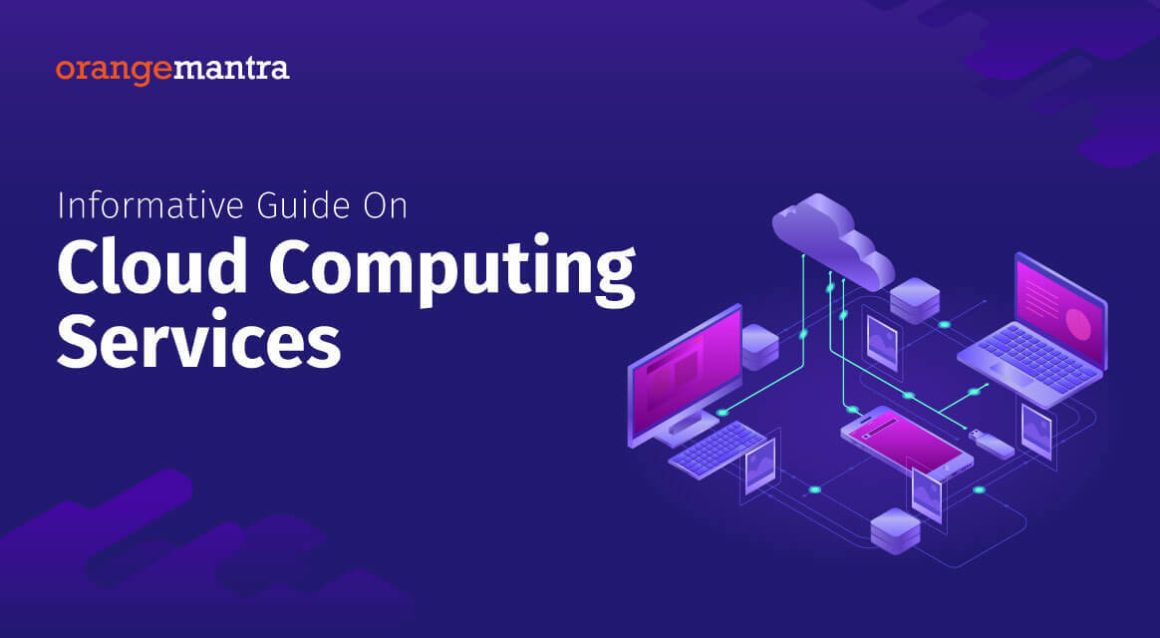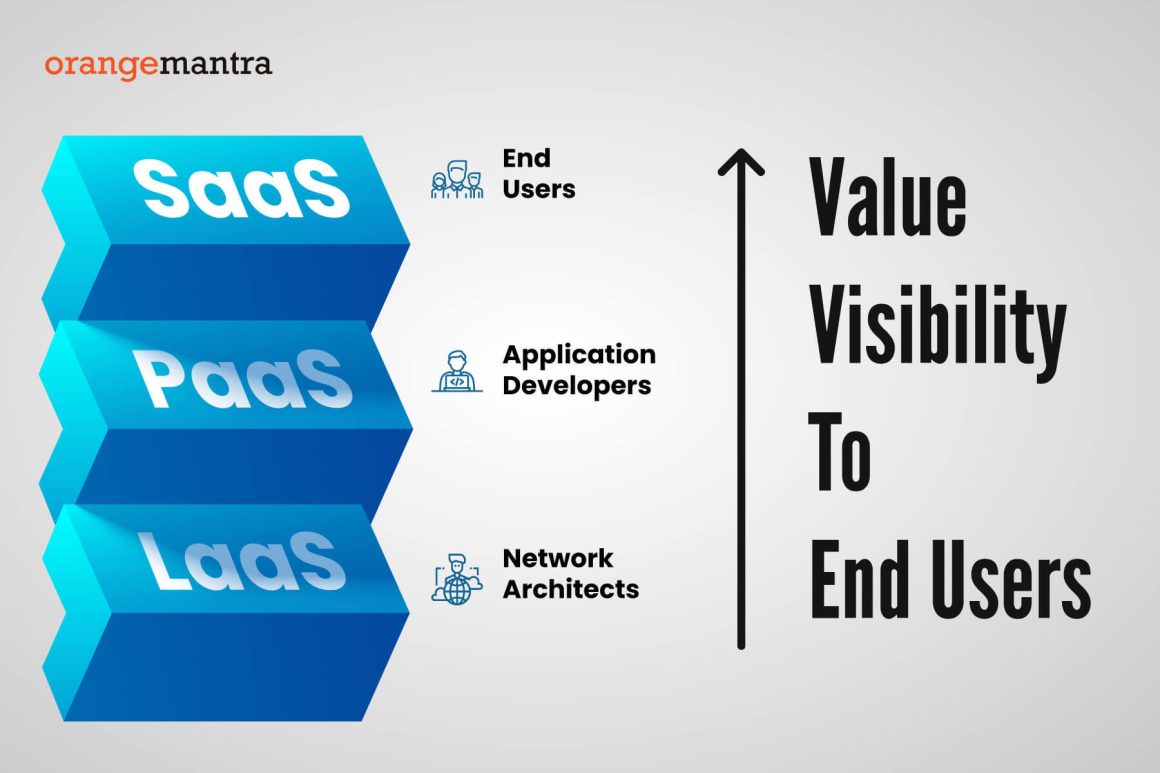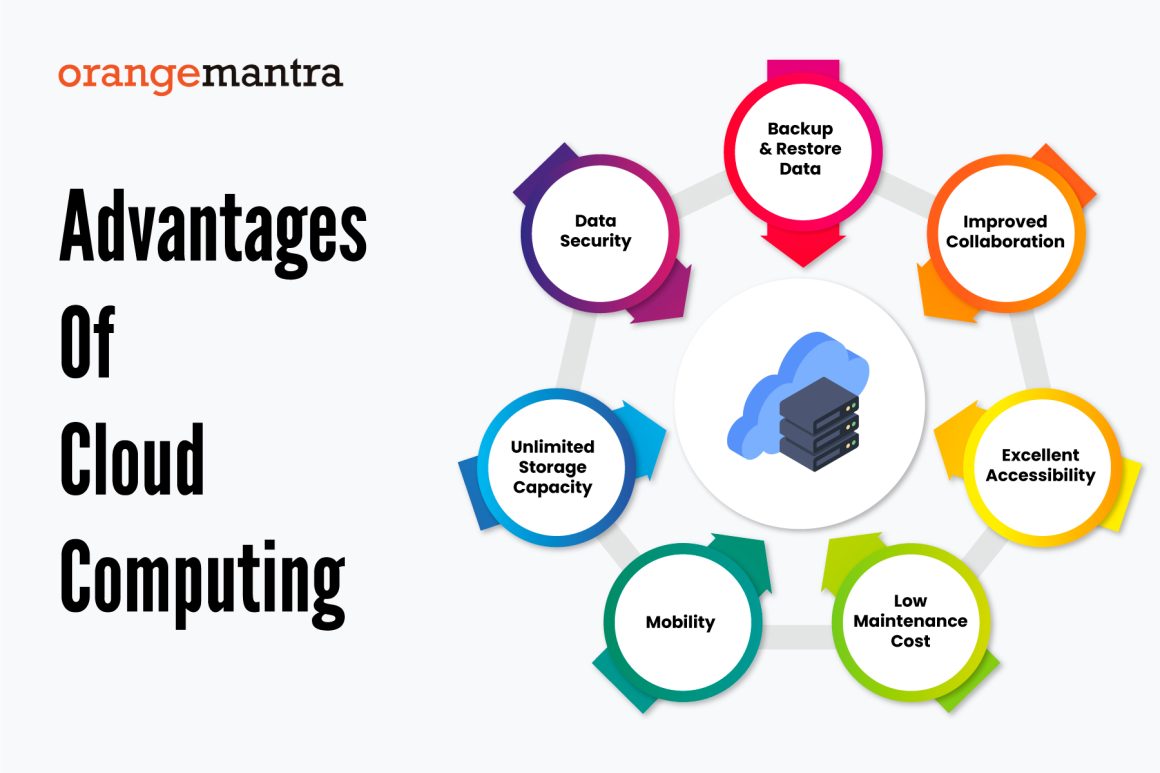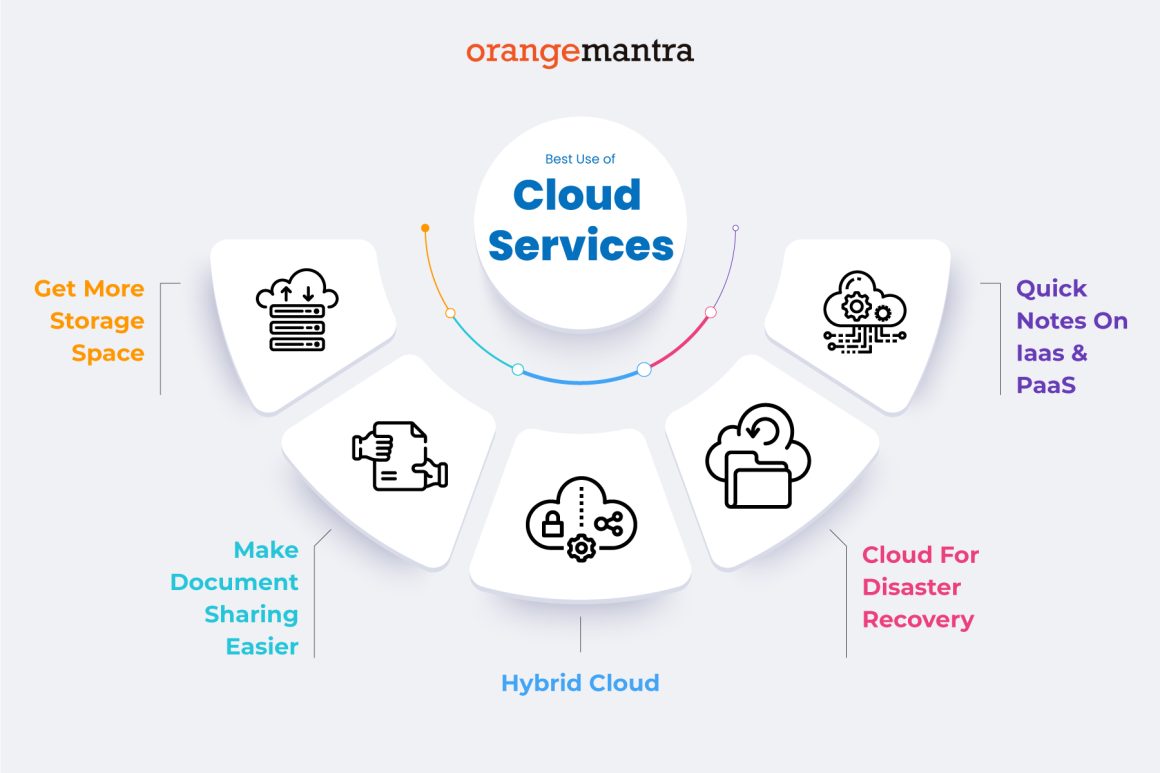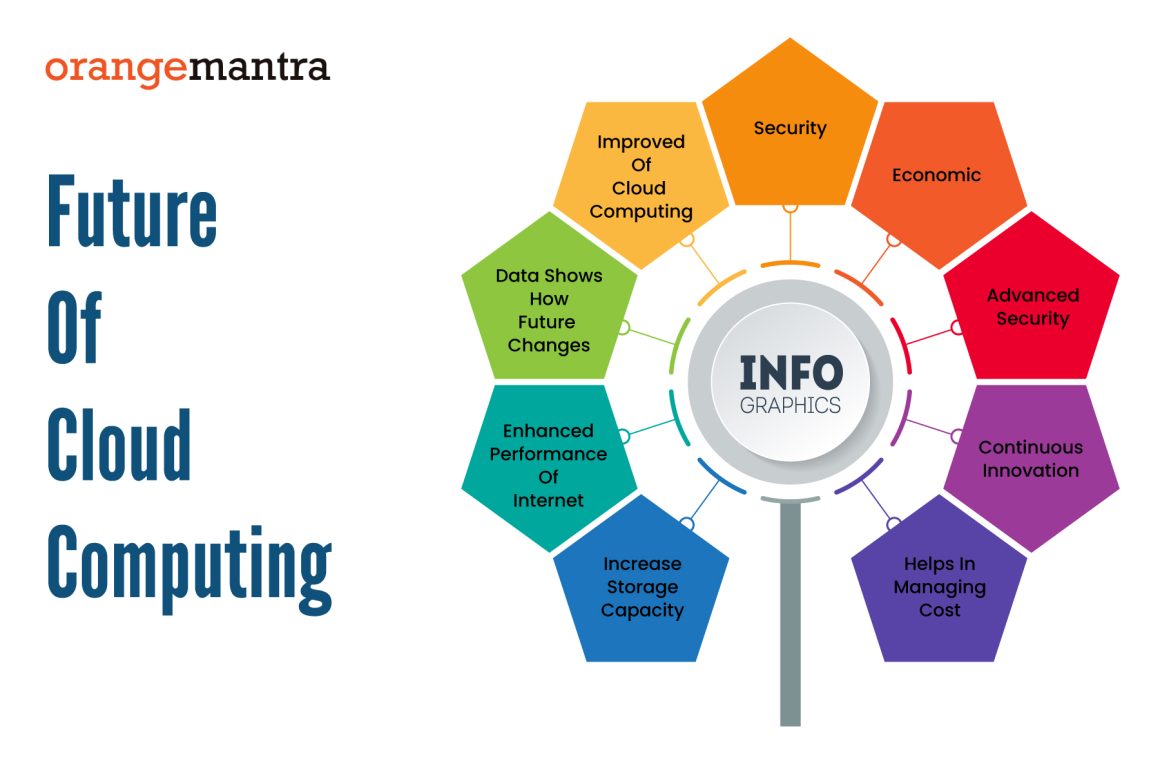Cloud computing is a revolutionary technology that has greatly impacted industries worldwide. Today, it has grown into a giant, and complex ecosystem of technologies, products, and services, thanks to its tremendous convenience and efficiency. You can now access your data and applications on any mobile device connected to the internet. Also, the cloud can store indefinite data, which you can further scale up or down as required.
From storage to computing services and SaaS (Software as a service) applications, there are numerous use cases for cloud computing services. Most importantly, it is a secure platform with multiple backup locations, which ensures your data is never lost or compromised due to natural or man-made hazardous incidents.
In this blog, we shall dive into some interesting facts and trends about cloud computing, and how you can implement it in your business to accelerate growth prospects.
Cloud Computing – Overview
Cloud computing is a revolutionary technology that has transformed the way businesses operate and offer quality services to their customers. With this technology, organizations can access a wide range of computing resources over the internet, eliminating the need for expensive hardware and software investments.
As per the definition, cloud computing refers to the delivery process of computing resources and services over the internet, on a pay-per-use setup. These computing resources include servers, storage, databases, software, and more.
The entire cloud ecosystem refers to a collective set of technologies that includes types, services, and solutions, namely:
Infrastructure as a Service (IaaS): It refers to a type of cloud computing service that offers virtualized computing resources over the internet.
Platform as a Service (PaaS): It refers to a cloud computing service that provides you with a platform for easy building, deploying, and managing applications.
Software as a Service (SaaS): It refers to a cloud computing service that delivers software applications over the internet, which eliminates the need for local installation and maintenance.
Serverless computing: A cloud computing model helps enable running and managing applications and services without the need to manage the entire infrastructure
Containers: It refers to a technology that allows applications to get packaged in a standardized format, making it easy for the developers to deploy and manage applications across multiple environments.
DevOps: It is a software development approach that emphasizes collaboration between development and operations teams.
Storage and backup services: As the name suggests, it is a cloud-based storage and backup solution for storing and safeguarding your crucial data.
Network and security services: It refers to a cloud-based security solution that helps organizations protect their applications and data from malicious attacks and phishing.
The cloud ecosystem is evolving, and new solutions are getting developed every day to help enterprises leverage the benefits of cloud computing including flexibility, efficiency, and cost savings.
Understanding the Types of Cloud Computing Services
The reinforced cloud computing technology has become a driving agent of the world of innovation including Artificial Intelligence (AI), the internet of things (IoT), and remote/hybrid work processes. In the coming years, we can expect more technologies like AR/VR, metaverse, cloud gaming, and quantum computing to gain more momentum.
Cloud computing has removed the need to invest in buying or owning over-the-top infrastructure for app development projects. Today, cloud service providers like OrangeMantra provide cloud computing “as-a-service” running on your servers and data centers. It means, your organization can avoid the overwhelming hiring process to great extent. You need to contact a cloud service provider or agency and they shall provide you with the right talent pool for your project.
2023 will be all about companies leveraging cloud services to access new and avant-garde technologies to drive more efficiency in their business growth. Next, we’ll talk about the benefits of cloud computing and how it will empower the world with breakthrough technologies.
What Are the Benefits of Cloud Computing?
A recent survey concluded, “94% of the businesses saw a dramatic improvement in the security of their services after switching to the cloud.” Another 91% of the enterprises feel that the cloud made it easy for them to meet government compliance requirements. On the other hand, Dell reports that companies that implemented big data, cloud mobility, and security services enjoy 53% improved revenue growth than their rival companies.
All these data conclude that no matter which niche your business is sailing through, the cloud has improvised every aspect of technological innovation and trending services. With people using data to undergo transition exponentially, it has become highly challenging for organizations to get all the data, programs, and systems running on in-house servers. Cloud solutions, therefore, gained widespread popularity for businesses to help their customers access their services, products, and information irrespective of their location.
Are you still hesitant to choose cloud solutions to accelerate your business growth? Here are the key benefits of introducing your organization to various cloud computing solutions:
Great Availability
Today’s tech-demanding enterprises cannot afford downtime in their services for even a second. Time is money and gone are the days when businesses suffered losses due to various downtime factors like power outages, natural disasters, hardware crashes, lack of staff, and so on. Organizations are switching to the cloud for its real-time deployment features and the availability of its impactful architecture.
Above all, tech-giant companies like Microsoft Azure, Google Cloud, and AWS offer service level agreements (SLA) that guarantee customers an uptime for 99.95% of their crucial services. Also, with the help of multizone regions in the IBM Cloud, Azure, and AWS, this demand increases exponentially.
Authenticity
Customer loyalty comes from the way you cater to their needs and keep up with the promises made. Cloud service platforms do the same. It ensures that any crucial database doesn’t randomly get disrupted or deleted. Cloud service providers upgrade, update, patch, and test their systems on regular basis to offer a great experience to their end users. Also, they offer a guarantee for the reliability of their services in SLAs.
For instance, Azure, AWS, and Google Cloud storage promise “eleven nines of durability” for the data they store. It means, you, as a customer receive 99.99% of credibility for reliable service offerings.
Highly Scalable
Built on virtualized infrastructure that can dynamically allocate resources like computing power, storage, and network bandwidth, cloud services offer high-end scalability. It allows businesses to quickly and hassle-freely scale up or down their usage of cloud services to meet the ever-evolving demands without the need for any major investments in hardware or other infrastructure.
Additionally, cloud services use load balancing and auto-scaling techniques to automatically distribute and manage their resources. Therefore, its performance remains consistent despite any changes in usage. It provides enterprises with the ability to scale their operations quickly, and smoothly, without worrying about their underlying infrastructure requirements.
Above all, cloud services are charged on a pay-as-you-go model, which allows businesses to only pay for the resources they used. It provides significant cost savings compared to traditional on-premises IT solutions.
Highly Adaptable
Cloud services are designed to be flexible and able to support ever-evolving business needs. They are built on multi-tenant architectures, which means that a single instance of a service can be used by multiple customers, each with its own specific requirements. It eases the experts to offer a range of customized services and adapt to the changing needs of the customers.
Also, cloud services are often API-driven, which means that they can get integrated with other systems and services to meet specific business requirements. It eases the process of building highly customized solutions that are tailored to the unique demands of every business. Above all, cloud services get deployed quickly, which allows businesses to start using them immediately. Businesses can stay ahead of the curve and continuously adapt to changing market conditions.
Highly Agile
For any new project, the product engineers need to experiment with new software and test the processes across various server configurations. This entire arrangement is time-consuming and will require your best resources on board. However, with the cloud, developers need a few seconds to get started with an IBM Virtual Server that runs on a pre-configured application stack. This comes as the biggest advantage of cloud computing where developers are set free from the time-consuming processes of managing great infrastructure and resources.
Cost-Effective
With cloud service platforms, you can always scale up and down as required. Users need not spend millions on software licenses and mainframe servers. Also, you never come across the challenges of managing excess hardware. The autoscaling feature in the cloud helps you right-size your work environment whenever required.
Also, the “pay-for-what-you-use” feature allows businesses to save a huge amount on operational expenses.
Global Reach
To avoid application latency, it’s crucial for data centers to reside nearby. Therefore, AWS and Azure have their data centers located on 6-7 continents for global reach to their customers. Cloud-based services help deploy applications in any corner of the world. Businesses use edge locations that empower the cache data to further reduce application latency.
This type of global reach feature makes the cloud platform an incredible solution, surpassing all the cost-effective challenges. Cloud’s worldwide deployment fastens up your application launch process in a relatively inexpensive budget.
Highly Automated
With the right Cloud service you can automate processes, manage configuration, and the underlying infrastructure including servers, storage, and networking. Also, it automatically scales up or down based on the demand of the user, which allows you to efficiently utilize resources in a cost-effective manner. Furthermore, the cloud service providers like OrangeMantra can automate routine maintenance and task monitoring like software updates, backups, and security patches.
Above all, the cloud’s load balancing services automatically distributes incoming traffic across multiple platforms to ensure high availability and great performance of your services. These automation features allow your organizations to focus on the core business operations, rather than managing the underlying technology.
Environmentally Sustainable
Cloud providers often invest in energy-efficient infrastructure and data centers, which use less energy and produce fewer carbon emissions compared to traditional on-premises data centers. Also, it enables the efficient utilization of server resources, reducing the demand for additional hardware and its adverse effects on the environment associated with manufacturing, shipping, and disposing of the physical equipment.
Cloud services utilize virtualization technologies, which allow multiple virtual machines to run on a single physical server, reducing the number of physical servers required, and their energy consumption. Furthermore, cloud services offer remote access to data applications, reducing the need for employees to commute to work, and therefore, decreasing the carbon footprint. As a result, many cloud providers have policies in place for responsible disposal and recycling of hardware to reduce electronic waste and sustain natural resources.
How Does Cloud Computing Work?
Cloud computing refers to a model for delivering computing resources over the internet on demand. Instead of running applications or storing data on a local computer and server. The users gain access to these services through the internet from a cloud service provider’s server. It offers enhanced flexibility, scalability, and cost savings as users pay only for the resources they use and doesn’t require the need for any infrastructure. Your cloud service provider is responsible for managing and maintaining the servers, storage, and network resources.
The cloud service providers host and maintain the hardware, software, and other infrastructure components. The users can access these resources on-demand via the internet using various devices and platforms. The key benefits of cloud computing include increased scalability, accessibility, scalability, reliability, and cost-effectiveness. Users can consume and avoid the capital expenditures associated with traditional IT systems. You could explore how AWS, Google Cloud, and Azure might cater to your business requirements
The work operation of cloud computing involves the following steps:
Resource provisioning: Cloud providers allocate and provision the computing resources that users need, such as servers, storage, databases, and networks.
Resource allocation: Our Cloud service-providing company uses various techniques, such as virtualization, to divide the physical infrastructure into virtualized resources that can be allocated to users on demand.
Resource utilization: Users can access and use the allocated computing resources over the internet, via APIs or web-based portals, and pay only for the resources they consume.
Resource management: Cloud providers manage the underlying infrastructure, including hardware maintenance, software upgrades, and security, to ensure the reliability, security, and availability of the resources.
Resource scaling: Cloud computing allows users to dynamically scale their computing resources up or down, depending on their changing needs, without having to make long-term commitments or investments in new hardware.
Resource deallocation: When users no longer need a particular resource, the cloud provider can deallocate it, freeing up resources for other users.
Overall, cloud computing provides a more flexible, scalable, and cost-effective approach to computing, enabling organizations and individuals to access and use computing resources on demand.
What Are the Most Popular Applications of Cloud Computing?
Cloud computing has a wide range of uses, and some of the most common applications include:
Storage and Backup: Cloud storage solutions provide a convenient and cost-effective way to store and access large amounts of data, as well as to backup important files and information.
Software as a Service (SaaS): Cloud-based SaaS applications include customer relationship management (CRM), enterprise resource planning (ERP), human resources management (HRM), and many other business applications.
Infrastructure as a Service (IaaS): IaaS provides virtualized computing resources, such as virtual machines, storage, and network capabilities, allowing organizations to run their applications and services in the cloud.
Platform as a Service (PaaS): PaaS provides a platform for developing, deploying, and managing cloud-based applications and services.
Analytics and Big Data: Cloud-based analytics and big data solutions provide organizations with the ability to process, analyze, and store large amounts of data to gain valuable insights and make informed decisions.
Disaster Recovery and Business Continuity: Cloud computing provides organizations with the ability to quickly recover from disasters or disruptions by providing access to alternative computing resources in the cloud.
Web Hosting: Cloud-based web hosting services provide organizations with a cost-effective and scalable way to host their websites and web applications.
Internet of Things (IoT): The IoT is the network of physical devices, vehicles, home appliances, and other items embedded with electronics, software, sensors, and connectivity which enables these objects to connect and exchange data. Cloud computing plays a crucial role in supporting and managing IoT solutions.
These are some of the most common uses of cloud computing, but the technology is constantly evolving and being used in new and innovative ways. The widespread availability of high-speed internet and the increasing demand for cost-effective and scalable computing solutions are driving the growth of cloud computing across a wide range of industries and applications.
Why Is It High Time to Switch to Cloud Computing Services?
There are several reasons why it’s high time to switch to cloud computing services.
Cost Savings: Cloud computing eliminates the need for capital expenditures on hardware, software, and maintenance, as users only pay for the resources they consume. This results in lower costs compared to traditional IT systems.
Scalability: Cloud computing provides the ability to dynamically scale resources up or down, depending on the changing needs of the organization, without having to make long-term commitments or investments in new hardware.
Accessibility: Cloud computing enables employees to access the resources they need from anywhere with an internet connection, using various devices and platforms. This increases mobility and productivity, enabling employees to work from anywhere at any time.
Disaster Recovery and Business Continuity: Cloud computing provides organizations with the ability to quickly recover from disasters or disruptions by providing access to alternative computing resources in the cloud. This ensures that business operations can continue even in the event of a disaster or disruption.
Improved Security: Cloud providers invest heavily in security measures to protect their infrastructure and data, providing a more secure computing environment compared to traditional IT systems.
Increased Innovation: Cloud computing provides organizations with access to a wide range of cutting-edge technologies and services, enabling them to innovate and differentiate themselves from their competitors.
Competitive Advantage: Organizations that adopt cloud computing can achieve a competitive advantage by providing their employees with the tools and resources they need to be more productive, making it easier to attract and retain talent.
In conclusion, cloud computing provides organizations with a cost-effective, scalable, and secure computing environment that enables increased innovation, increased mobility and productivity, and improved business continuity. The widespread availability of high-speed internet and the increasing demand for cost-effective and scalable computing solutions make it high time to switch to cloud computing services.
What Are the Future Trends in Cloud Computing?
The cloud computing industry is constantly evolving, and some of the future trends include:
Multi-cloud and Hybrid Cloud: Organizations are increasingly adopting multi-cloud and hybrid cloud strategies, using multiple cloud providers, and integrating cloud services with on-premises IT systems, to take advantage of the benefits of different cloud platforms.
Artificial Intelligence and Machine Learning: Cloud-based AI and ML services are becoming increasingly popular, as organizations seek to use these technologies to gain insights and improve decision-making.
Edge Computing: Edge computing is a distributed computing model in which data processing and storage occur at the edge of the network, closer to the source of the data. This trend is growing in response to the increasing demand for low-latency and real-time data processing, especially in the context of the Internet of Things (IoT).
Serverless Computing: Serverless computing is a model in which the cloud provider manages the infrastructure and allocates resources on demand, allowing developers to focus on writing and deploying code, without worrying about infrastructure management.
Increased Focus on Security and Privacy: With growing concerns about data security and privacy, organizations are placing increasing emphasis on ensuring the security and privacy of their data in the cloud. This will drive the development of new security and privacy technologies and practices.
The Growth of Cloud Gaming: Cloud gaming is an emerging trend in which games are streamed from the cloud to devices, eliminating the need for powerful local hardware. This trend is expected to grow as more games become available in the cloud and as cloud gaming technology improves.
The Expansion of Cloud Adoption: As the benefits of cloud computing become more widely recognized, cloud adoption is expected to continue to grow, especially among small and medium-sized enterprises, as well as in developing economies.
These trends indicate that cloud computing will continue to play a key role in shaping the future of computing and the digital world. The widespread availability of high-speed internet and the increasing demand for cost-effective and scalable computing solutions are driving the growth of cloud computing across a wide range of industries and applications.
Summary
In this blog, we have tried to cover all the aspects of cloud computing, its benefits, trends, and the future aspects of this great technology. If you are wondering how to accelerate your business with cloud computing services, we are here to help. OrangeMantra offers great cloud computing solutions, because our experts understand the ever-evolving demands of the world, and help businesses cater to all their needs with the best technological trends.
FAQs
What Are the Benefits of Cloud Computing?
Cloud computing platform is highly scalable and universally available, and users can pay only for what they use.
What Is Cloud Computing and What Are Its Benefits?
Cloud computing refers to the delivery of computing resources like IT infrastructure and data centres over the internet. This technology helps businesses to rent storage space, and access software programs from a well-renowned cloud service provider. This way, organizations need not build and maintain an IT infrastructure or data center.
What Are the 5 Use Cases of Cloud Computing?
Although there are many use cases of cloud computing services, we have listed down the most popular ones, namely:
- Infrastructure-as-a-service (IaaS)
- Platform-as-a-Service (PaaS)
- Hybrid cloud and multi-cloud
- Test and deployment
- Big data analytics
